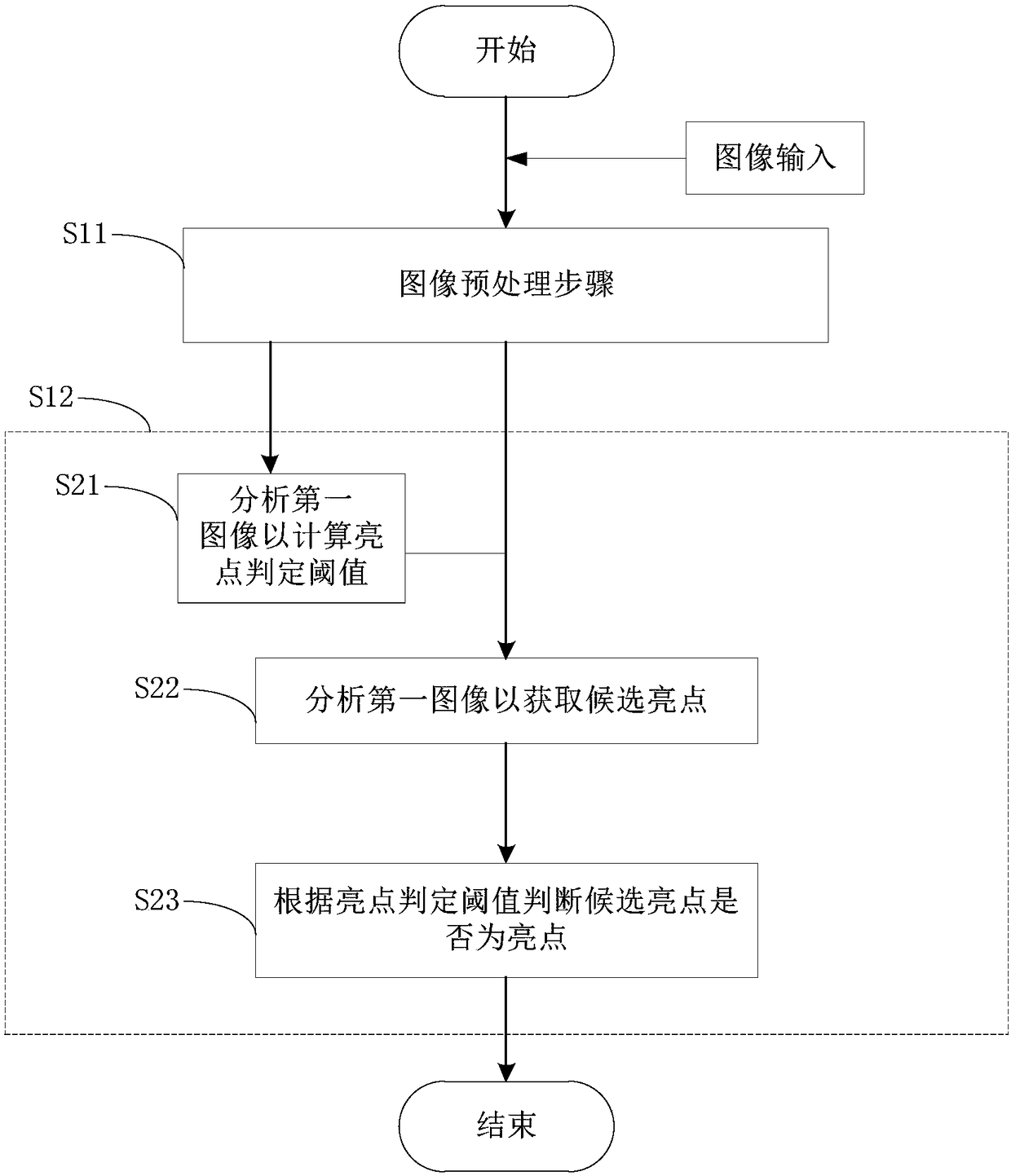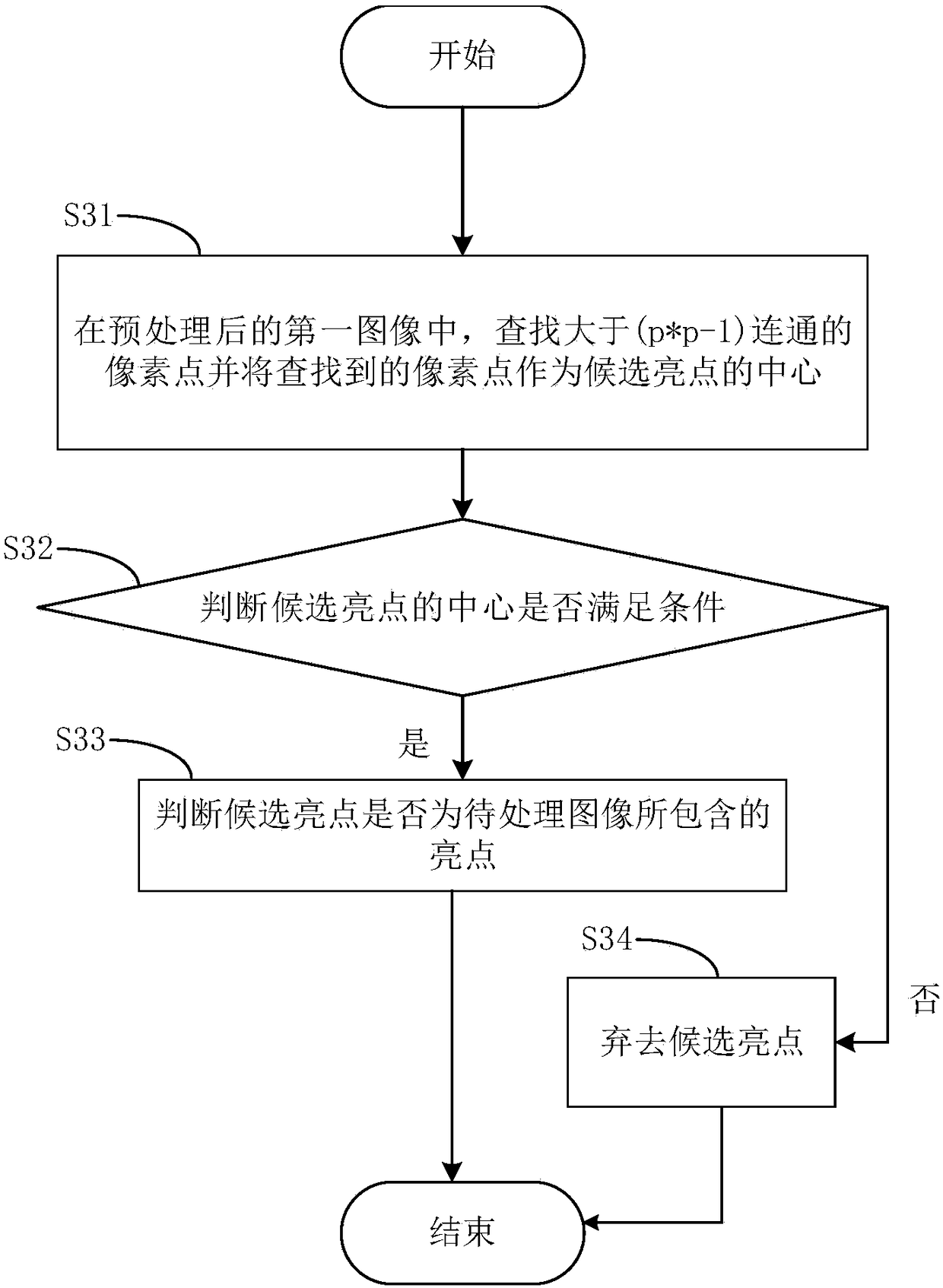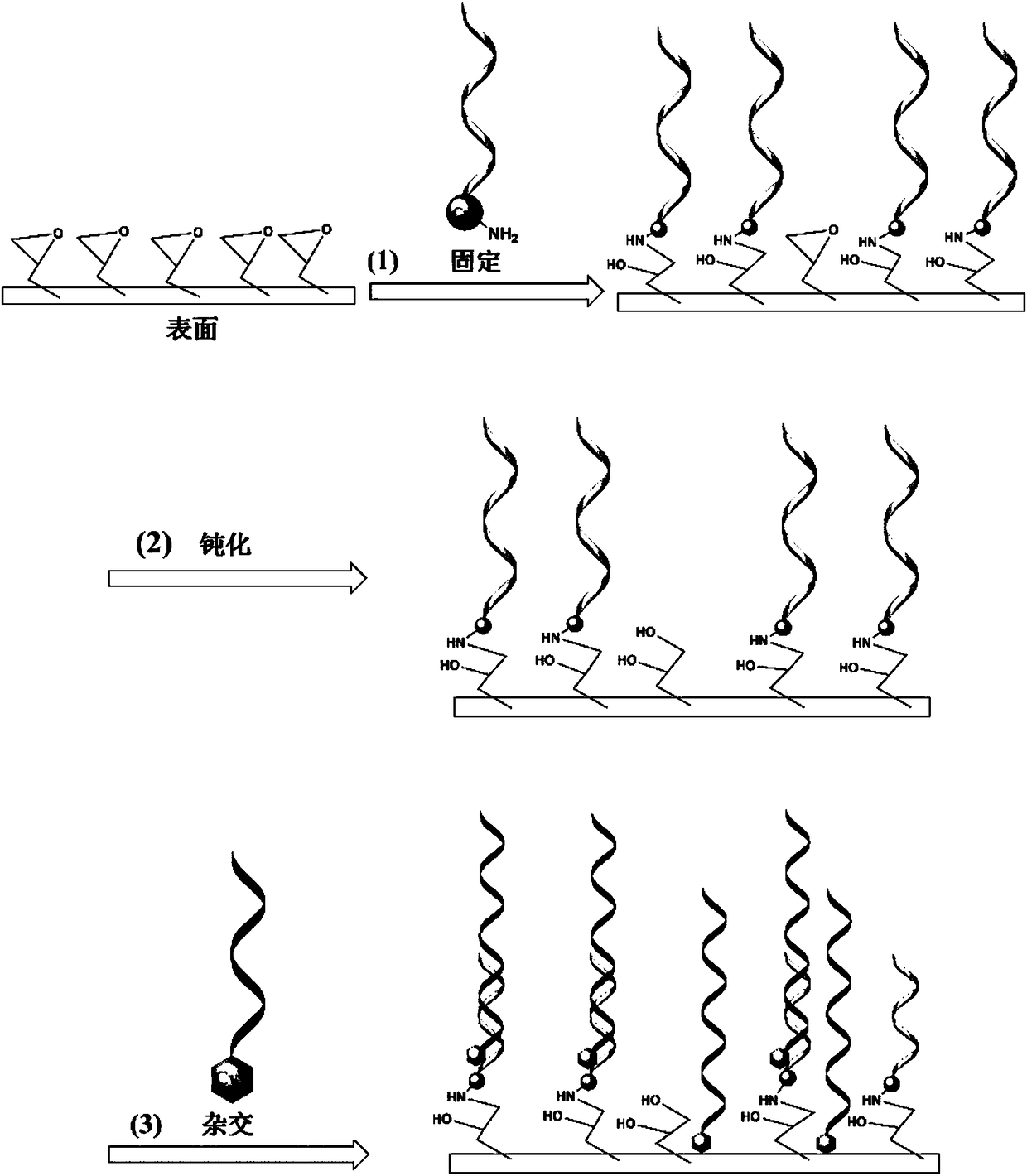Method for detecting specific and/or non-specific adsorption of nucleic acids
A non-specific and specific technology used in the detection of nucleic acid specificity and/or non-specific adsorption, which can solve the problems of increased error rate of sequencing results, decreased sequencing throughput and sequencing quality
- Summary
- Abstract
- Description
- Claims
- Application Information
AI Technical Summary
Problems solved by technology
Method used
Image
Examples
Embodiment 1
[0091] Example 1: Investigating the influence of non-specific adsorption during DNA hybridization
[0092] Chip: glass with epoxy groups on the surface (purchased from Schott);
[0093] Fixed strand 1 (EKB-6P-Cy3): artificially synthesized specific sequence with -NH at the end 3 And the DNA short sequence of the fluorescent group Cy3 dye, the sequence is specifically:
[0094] TTTTTTTTTTTTACTTTGCCTCCTTCTGCATGGTATTTCTTTCTCTTCCGCACCCAG-3' (SEQ ID NO: 1);
[0095] Fixed strand 2 (EKB-7P-Cy3): artificially synthesized specific sequence with -NH at the end 3 And the DNA short sequence of the fluorescent group Cy3 dye, the sequence is specifically:
[0096] TTTTTTTTTTTCCACAAAATGATTCTGAATTAGCTGTATCGTCAAGGCACTCTTGCC TAC-3' (SEQ ID NO: 2);
[0097] Hybrid strand (EKB-6T-Cy5): artificially synthesized complementary pairing with fixed strand 1, non-complementary pairing with fixed strand 2, with a length of 35bp to be tested, a short DNA sequence with a fluorescent group Cy5 at the e...
PUM
 Login to View More
Login to View More Abstract
Description
Claims
Application Information
 Login to View More
Login to View More - R&D
- Intellectual Property
- Life Sciences
- Materials
- Tech Scout
- Unparalleled Data Quality
- Higher Quality Content
- 60% Fewer Hallucinations
Browse by: Latest US Patents, China's latest patents, Technical Efficacy Thesaurus, Application Domain, Technology Topic, Popular Technical Reports.
© 2025 PatSnap. All rights reserved.Legal|Privacy policy|Modern Slavery Act Transparency Statement|Sitemap|About US| Contact US: help@patsnap.com



